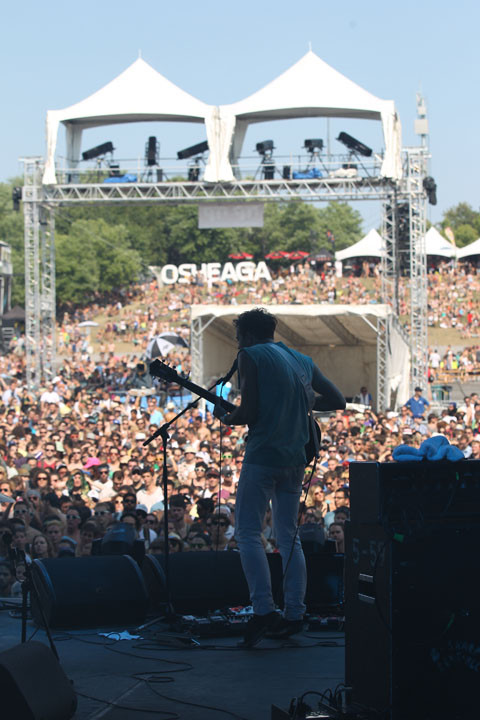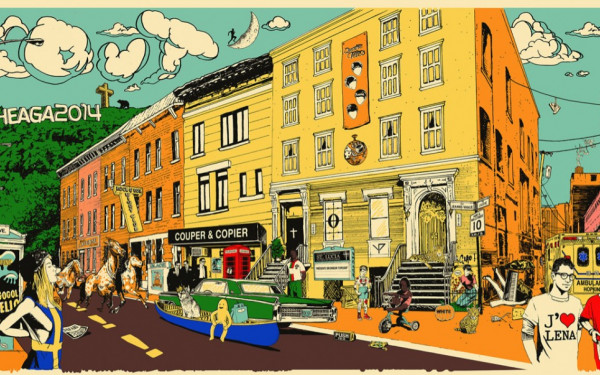Living Osheaga
A Look at Local Talent at Canada’s Biggest Music Festival
Osheaga just keeps getting bigger.
Over 120,000 giddy festival-goers gobbled up as many sets as they could muster, as 105 bands played the festival over the course of three days on five stages. Under sweltering heat, torrential rain and an unrelenting fire hose, those attending were destined to be caked with dirt and jittering with excitement.
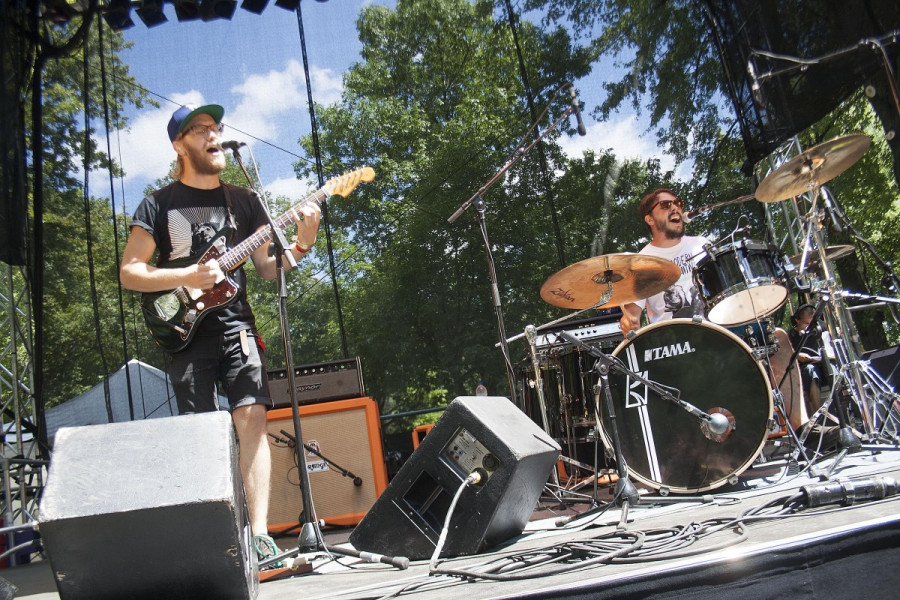
As the first few hundred attendees wandered into Parc Jean-Drapeau in the early hours of the festival, a tight cluster formed at the front of the Scène des Arbres stage.
Local post punk duo Solids banged out a short set of lo-fi anthems to start off the festival; loyal fans gathered in front while curious onlookers watched from a distance. Their rough, melodic sound cut through the excited chatter of the growing crowd. However, the duo lost some momentum with their awkward between-song small talk.
“I don’t know any jokes, sorry,” said guitarist Xavier Germain.
Through heavy open tunings and tight, syncopated breaks, their sound never seemed empty. The guitar-and-drums two-piece sang lyrics in unison that were meant to be screamed by a sweaty crowd.
They may not have gotten the sing-alongs, but they certainly got the sweat—Friday came with a humidity warning and over 40 degree temperatures.
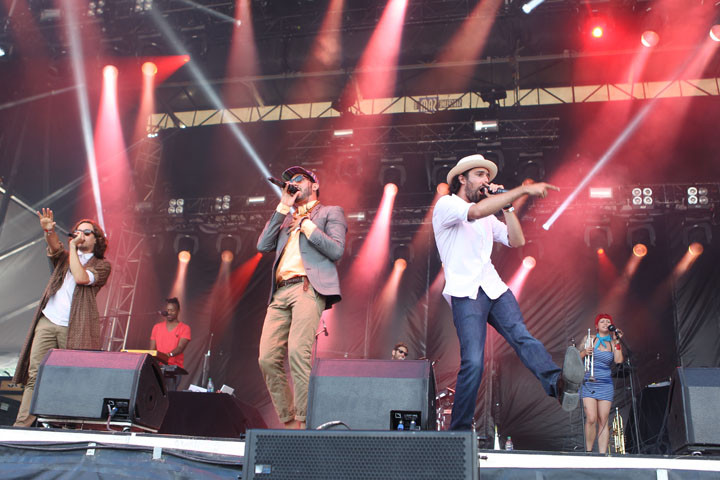
On the main stage that afternoon, maritime hip hop trio Radio Radio played a high-adrenaline set for thousands. Their Acadian rhymes mash French and English phrases, leading their music to be the soundtrack of everyday Montreal conversation. And it’s here that the band’s career really started to take off.
“It’s fun for us, we get to play with bands we don’t normally play with,” said Radio Radio’s Alexandre Bilodeau about playing the festival. Due to contract agreements, it’s rare to see bands play both Osheaga and the French equivalent, FrancoFolies. But with their bilingual sound and good-times attitude, Radio Radio have no problem bridging the gap.
And if the crowds aren’t enough to entice a band to play Osheaga, the food is. Bringing in local chefs to provide nourishment for the artists, the festival is renowned for its restaurant-quality munchables.
“When there’s freshly cut prosciutto in front of you, it’s alright,” said MC Gabriel Malenfant, smiling. “Although I had a poutine anyways.”
With the help of a keyboardist, drummer and trumpet, Radio Radio made their second performance at Osheaga their best yet, and their growing fan-base can’t help but agree, if the crowd’s response was any indication. One thing the trio did regret was missing the chance to see the mythical Snoop Lion, who was scheduled to play the next day.
“I think it’s a transitional phase, from Snoop Dogg to Snoop Lion to Snoop Dragon,” said Malenfant. “He’ll be a Buddhist, and instead of rapping words he’d be rapping chimes.”
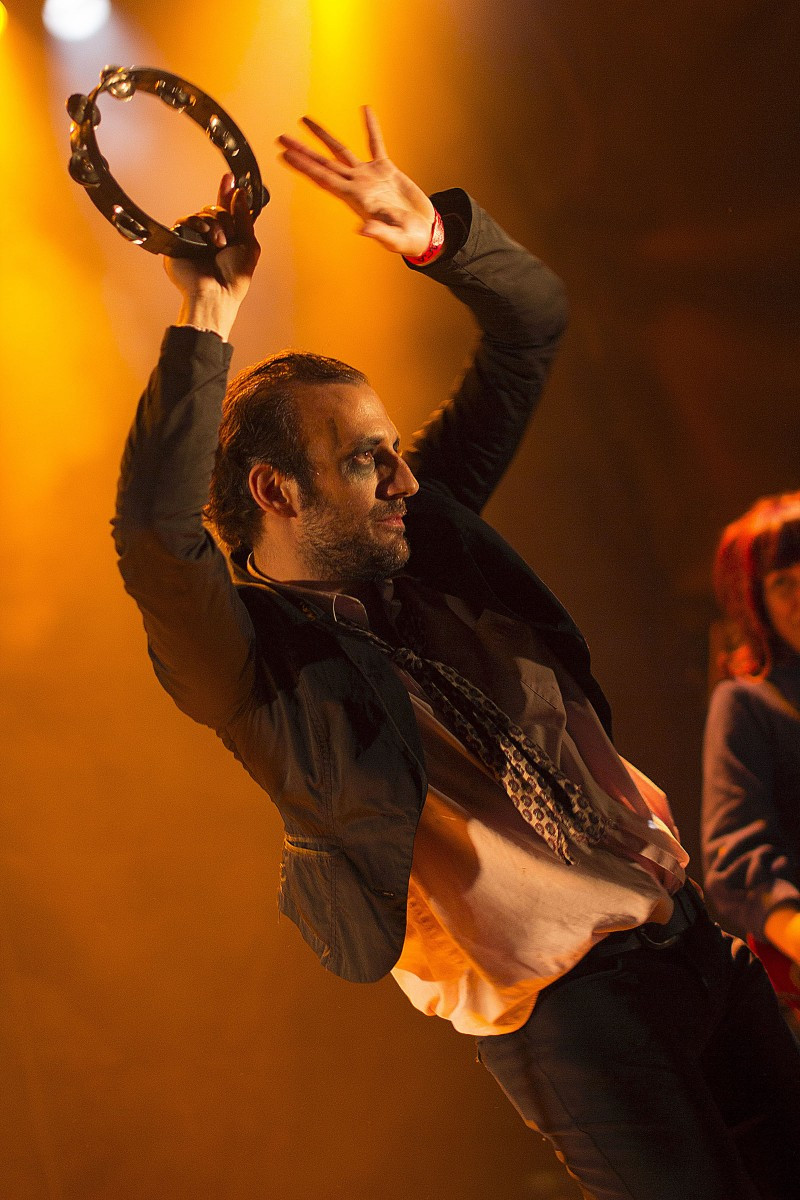
After Sigur Rós’ crowd-silencing theatrics and following Florence and the Machine’s pure contagious onstage joy, one of only two Montreal-based headliners that weekend took to the Scène des Arbres stage.
Les Breastfeeders closed the stage with a wicked mastery. Their years of experience were evident in their command of the crowd, and the tightness of their hour-long set.
Luc Brien’s frantic, nonsensical ramblings to the crowd increased in speed throughout the show; they were clearly pressed for time. Johnny Maldoror, the full-time tambourine player who must be the bane of sound techs and security everywhere, danced and rolled around onstage amid huge guitar and gang vocals.
On a path of destruction, the six-piece delivered the best garage rock you could ask for. The thousands at the main stage may have gotten a larger-than-life dose of Justice’s digitized rock ‘n’ roll, but at the tree stage, it was tapped at the source—cigarettes and smeared makeup painting the real thing.
The biggest Montreal-based group to hit the main stage was Plants and Animals, who proved worthy of arena-rock status with their huge sound captivating the thousands of fans packed in front of them to hear the classic rock revival in their diverse set. With massive-sounding drums and polished guitar, they looked made for the big stage. They even sprung for a gimmick, bringing girls onstage to throw t-shirts to the crowd.
“I feel the vibe [at Osheaga] is better this time—they’ve tapped something really welcoming,” said Plants and Animals guitarist/singer Nic Basque after the show. “It feels like there are more tourists, which is great for the city.”
Playing a festival like this is a band admitting it’s not just their show, and as such, the crowd is as diverse as can be, especially with a festival as international as Osheaga. The guys from Plants and Animals agreed that while it didn’t quite feel like a hometown show, there are always little indicators that remind festival-goers of where they are.
“Because of the French, it feels like Montreal, and our team and girlfriends are here, so you’re constantly reminded you’re in Montreal, but it definitely feels different,” said Basque.
And playing alongside big names can be inspirational, as was the case for Basque at Sigur Rós, the night before the Plants and Animals set. That night, he enjoyed the show from the crowd, and was looking forward to taking in a few more.
“I’ve never seen Feist live, so I’m excited for that,” said Basque. “And Snoop, I’m curious.”
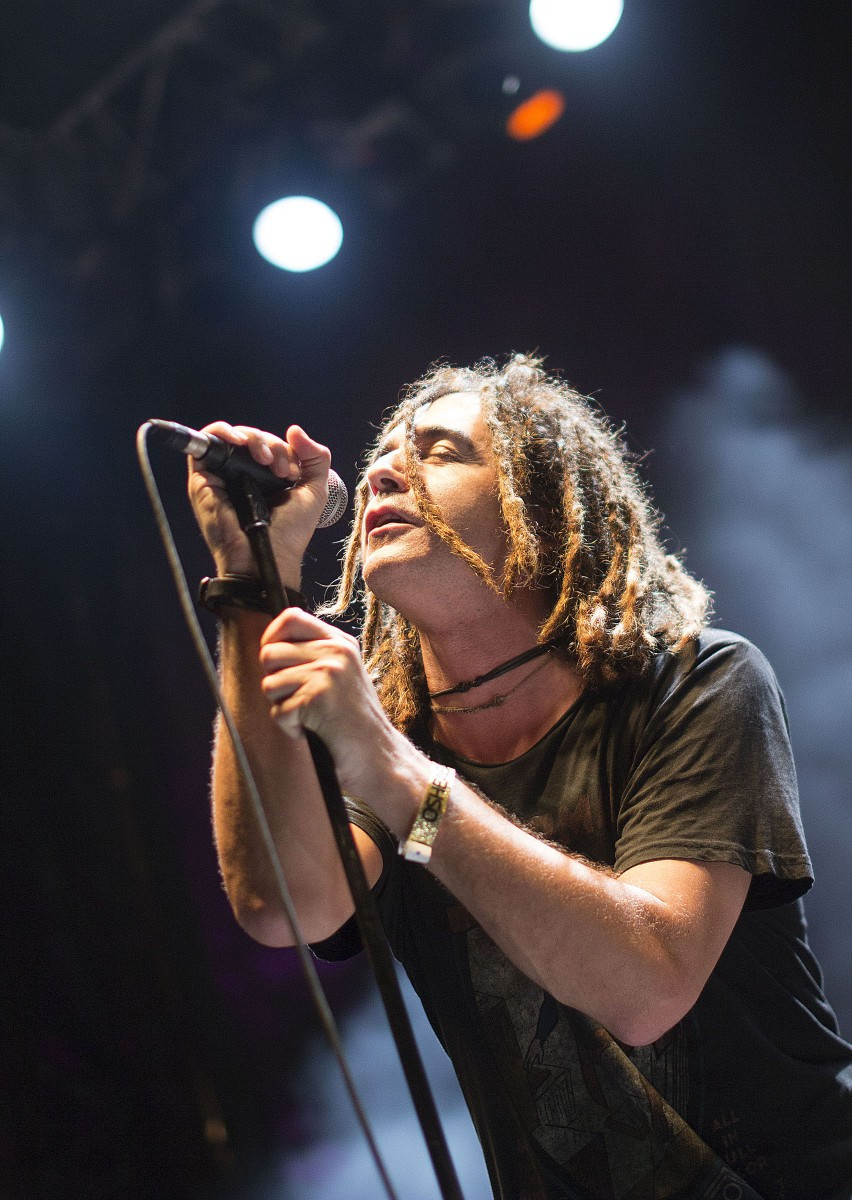
While M83 were delivering synthesized melodrama and the Black Keys were attempting to turn a little blues act into something a massive outdoor audience can appreciate, the Asexuals were headlining the Scène des Arbres stage. Playing for a modest crowd of headbangers, the band had recently reunited after parting ways in the ’80s.
It felt like one of the first few shows in the cult Canadian faux rockumentary Hard Core Logo, featuring a band that split up over plans for their future reuniting to play for a couple hundred old fans and young punks. They played intensely, John Kastner gripping the mic, swaying and staring at the ground, long dreadlocks covering his face.
For one song, Kastner sang a duet with a guest—Montreal native Jessica Paré, the actress who plays opposite Jon Hamm in the AMC series Mad Men. As the crowd realized who this black-clad woman was, the iPhones began appearing in the air, one by one, filming this memorable moment.
Osheaga bridges the A-list and the independents, the freaks and the families, all together on an island to live in a little fantasy—accessible by Metro. It takes up an energy of its own, the excitement never really fading the entire stretch of the weekend. It’s a hyper-sensory stimulative model of Montreal, where old friends, the punk band and the T.V star, can share the stage together.

